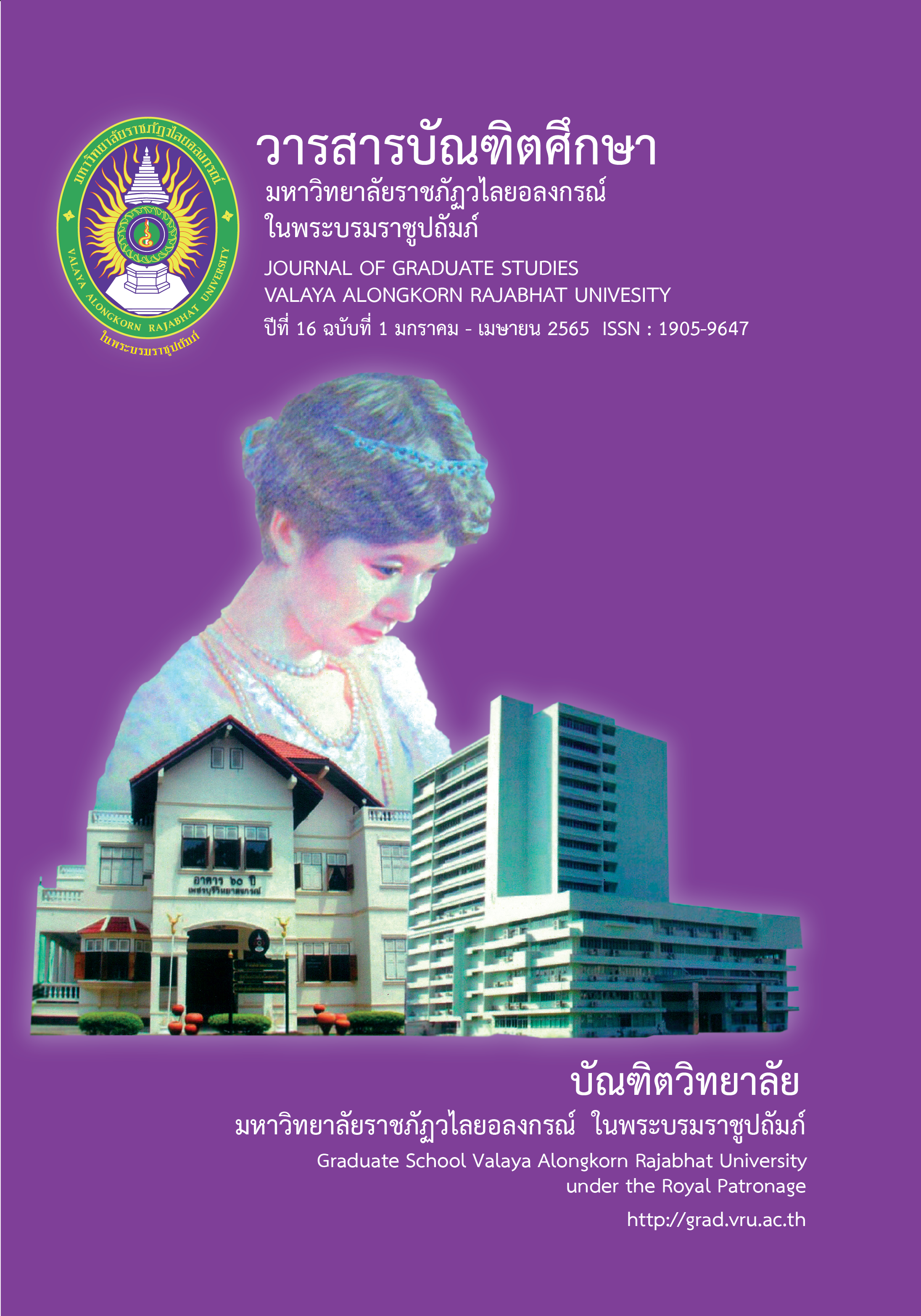THE DEVELOPMENT FRAMEWORK OF STATISTICAL LITERACY
Main Article Content
Abstract
The objective of this study were to 1) develop framework of statistical literacy and 2) statistical literacy character of Rajabhat Mahasarakham University students. The samples were randomed by stratified sampling 27 students. Data was analyzed by protocol analysis, task analysis and analytic description.
The results were the following; 1) Statistical literacy framework which composed of process of data collecting, process of data analyzing, process of data distribution, process of hypothesis testing, process of analysis of variance and process of association data 2) Characteristics statistical literacy. The first process is process of collecting, Most of students hare statistical literacy character at the 1st level. The second process is process of analyzing data, for overall characteristics statistical literacy of students at are the 2nd level which mostly. The third five process is process of reasoning about distribution data for overall characteristics statistical literacy of students are at the 2nd which level mostly. The Fourth process is of process of reasoning about hypothesis testing for overall characteristics statistical literacy of students are at the 3rd which level mostly. The Fifth process is of reasoning about analysis of variance for overall characteristics statistical literacy of students are at the 3rd which level mostly. The Sixth process is of process of association data for overall characteristics statistical literacy of students are at the 4th which level mostly.
Article Details

This work is licensed under a Creative Commons Attribution-NonCommercial-NoDerivatives 4.0 International License.
บทความทุกเรื่องได้รับการตรวจความถูกต้องทางวิชาการโดยผู้ทรงคุณวุฒิ ทรรศนะและข้อคิดเห็นในบทความ Journal of Global of Perspectives in Humanities and Social Sciences (J-GPHSS) มิใช่เป็นทรรศนะและความคิดของผู้จัดทำจึงมิใช่ความรับผิดชอบของบัณฑิตวิทยาลัย มหาวิทยาลัยราชภัฏวไลยอลงกรณ์ ในพระบรมราชูปถัมภ์ กองบรรณาธิการไม่สงวนสิทธิ์การคัดลอก แต่ให้อ้างอิงแหล่งที่มา
References
Beaton, A. E., Mullis I. V. S., Martine M. O., Gonzalez E. J., Kelly D. L. and Smith T. A. (1996). Mathematics Achievement in the Middle School Years: IEA’s Third International Mathematics and Science Study (TIMSS). International Association for the Evaluation Achievement (IEA), Vol 1. Center for the Study of Testing, Evaluation, and Educational Policy, Boston College.
Curcio, F. R. (1987). Comprehension of Mathematical Relationships Expressed in Graphs. Journal for Research in Mathematics Education, 18(5), 382-393.
Gal, I. (2004). Statistical Literacy, In D. Ben-Zvi & J. Garfield (Eds.), the Challenge of Developing Statistical Literacy, Reasoning and Thinking. Netherlands: Kluwer Academic Publishers, Springer, Vol. 1, pp. 47-78.
Garfield, J. and Ben-Zvi, D. (2008). Developing Students’ Statistical Reasoning: Connecting Research and Teaching Practice. Dordrecht, the Netherlands: Springer, 1, 45-63.
Gould, R., Kreuter, F. and Palmer, C. (2006). Towards Statistical Thinking: Making Real Data Real. In Proceedings, International Conference on Teaching Statistics 7, Salvador, Brazil, 1-6.
MacGillivray, H., and Pereira-Mendoza, L. (2011) Teaching Statistical Thinking through Investigative Projects. In: Batanero C., Burrill G., Reading C. (eds) Teaching Statistics in School Mathematics-challenges for Teaching and Teacher Education. New ICMI Study Series, Vol 14. Springer, Dordrecht.
Moore, D. S. (1997). New Pedagogy and New Content: The Case of Statistics (with Discussion). International Statistical Review, 65(2), 123-165.
Pereira-Mendoza, L. and Mellor, J. (1991). Students’ Concepts of Bar Graphs: Some Preliminary Findings. In D. Vere-Jones (ed.). Proceedings of The Third International Conference on Teaching Statistics 3. (Vol. 1). Voorburg, the Netherlands: International Statistical Institute. pp. 150-157.
Wild, C. J. and Pfannkuch, M. (1999). Statistical Thinking in Empirical Inquiry. International Statistical Review, 67(3), 223-265.


